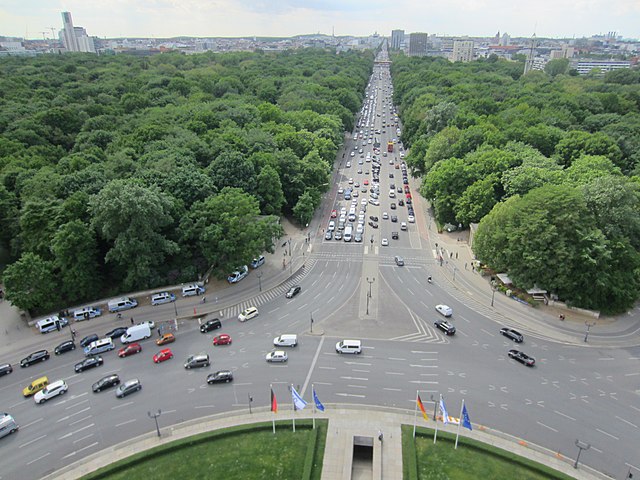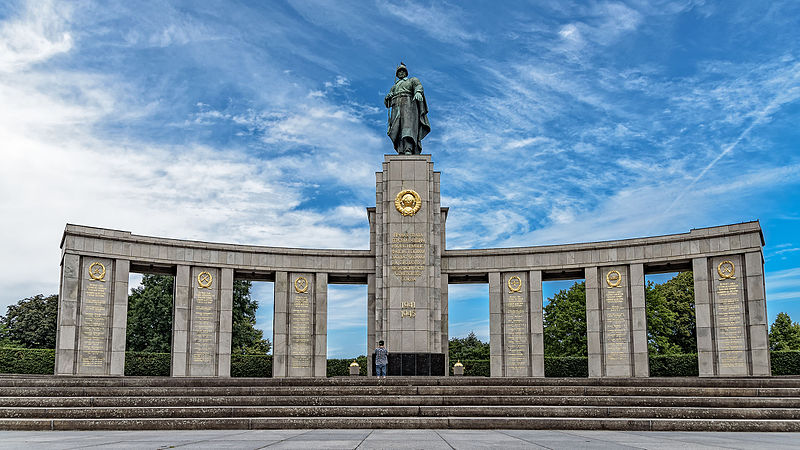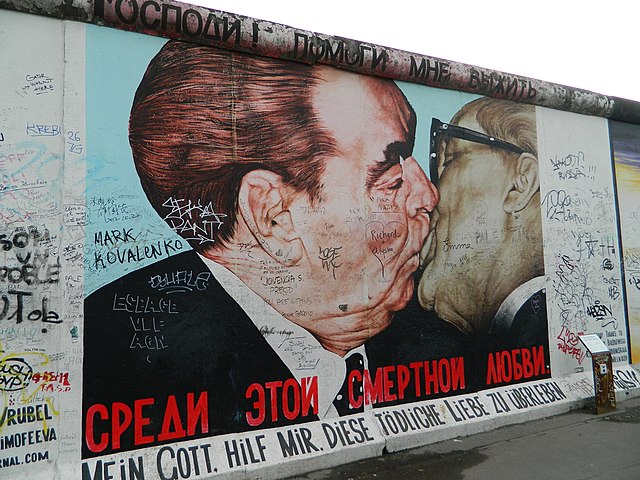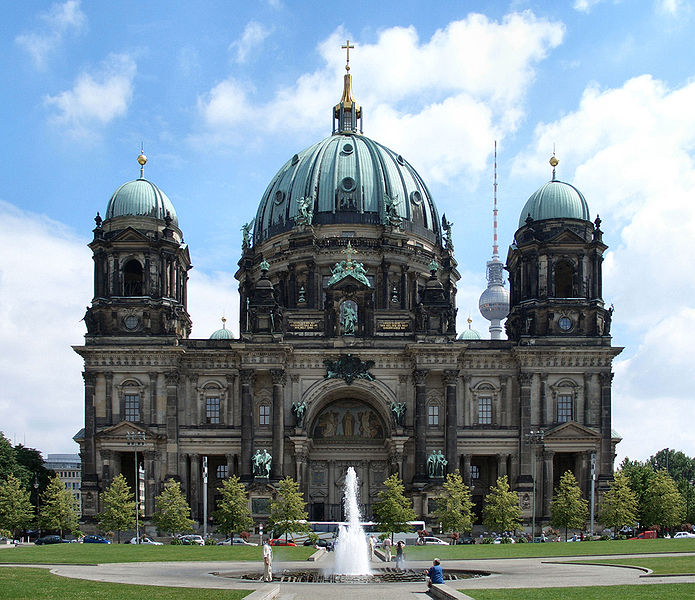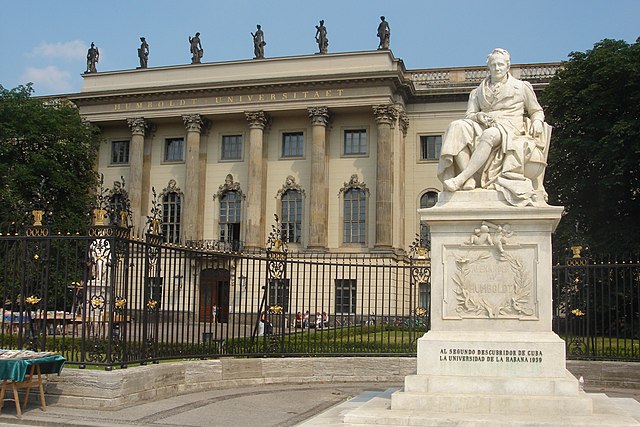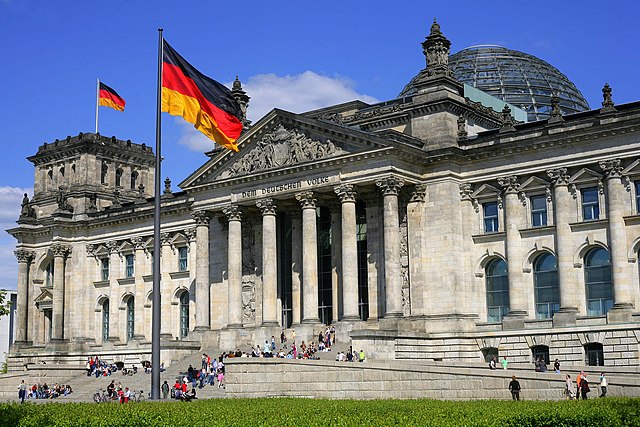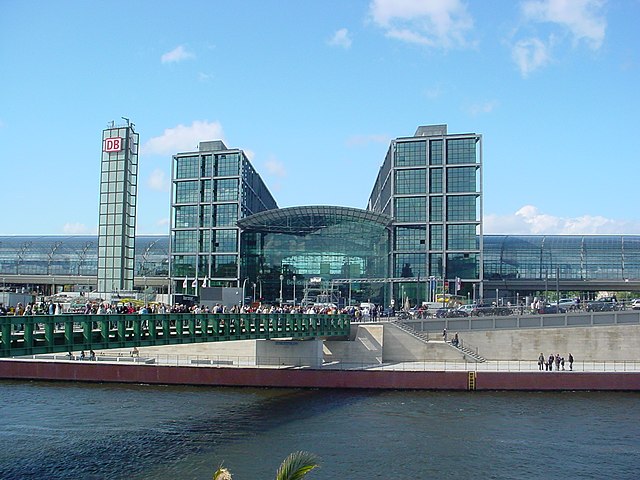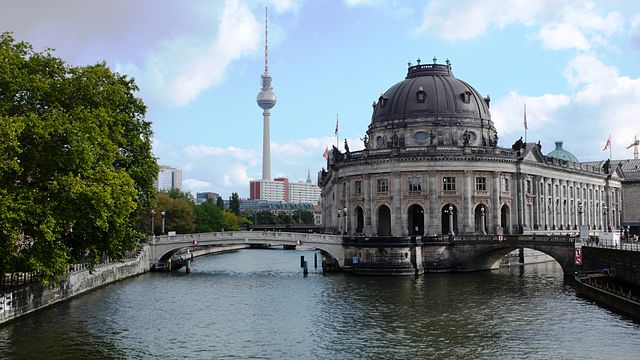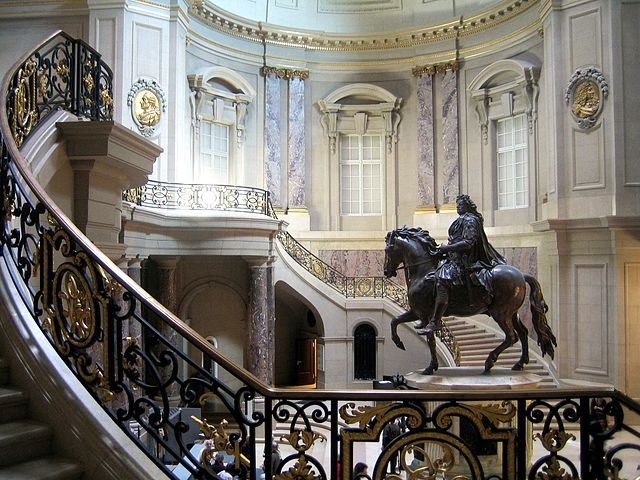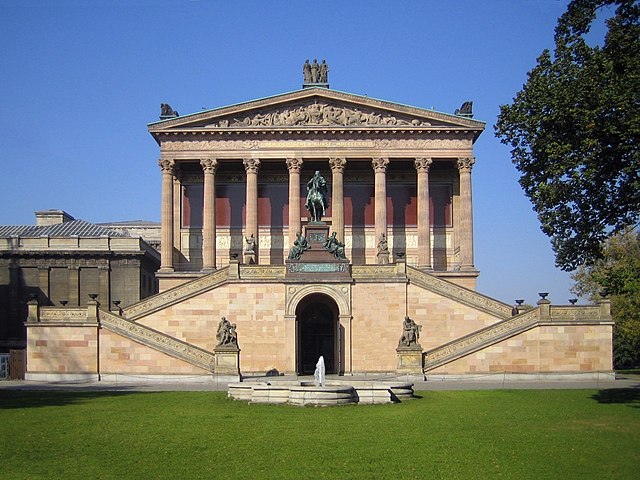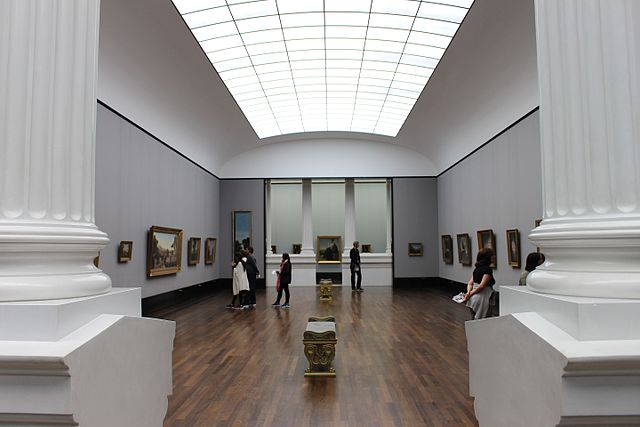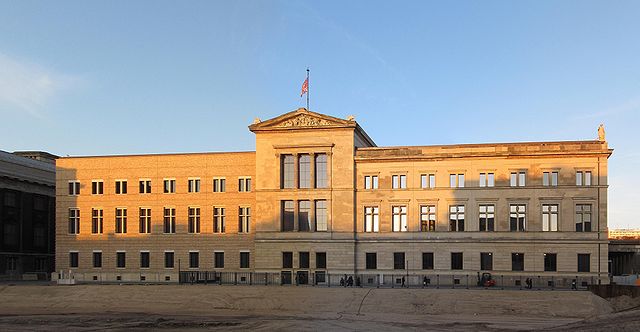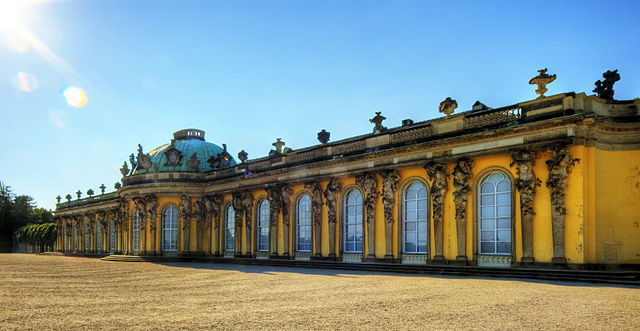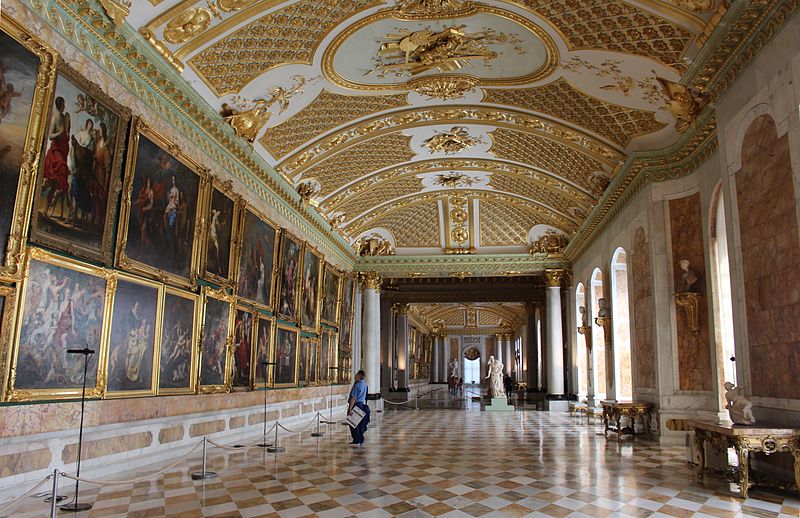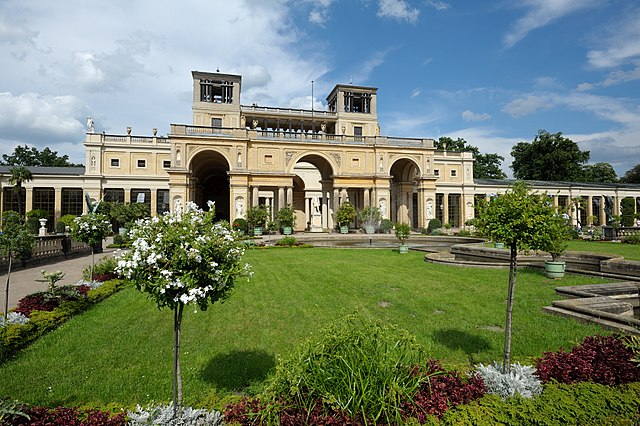As the capital of Germany, and a fascinating city of Europe, Berlin is filled with museums, monuments, picturesque parks, grand avenues and riverside promenades. The best day trip from Berlin is a tour of Potsdam, 24 km (15 mi) south west of the capital. It is a baroque town and often called Germany's Versailles.
Berlin
The original church on the site was built in the 1890s. It was badly damaged in a bombing raid in 1943. The present building, which consists of a church with an attached foyer and a separate belfry with an attached chapel, was built between 1959 and 1963. The damaged spire of the old church has been retained and its ground floor has been made into a memorial hall. The Memorial Church today is a famous landmark of western Berlin, and is nicknamed by Berliners "der hohle Zahn", meaning "the hollow tooth".
The Victory Column is a monument in Berlin, Germany. Designed by Heinrich Strack, after 1864 to commemorate the Prussian victory in the Danish-Prussian War. The Victory Column is a major tourist attraction in the city of Berlin. Its viewing platform, for which a ticket is required, offers a view over Berlin.
The Soviet War Memorial (Tiergarten) is one of several war memorials in Berlin, capital city of Germany, erected by the Soviet Union to commemorate its war dead, particularly the 80,000 soldiers of the Soviet Armed Forces who died during the Battle of Berlin in April and May 1945.
The Brandenburg Gate (German: Brandenburger Tor) is an 18th-century neoclassical monument in Berlin, and one of the best-known landmarks of Germany. Throughout its existence, the Brandenburg Gate was often a site for major historical events and is today considered not only as a symbol of the tumultuous history of Europe and Germany, but also of European unity and peace.
The Memorial to the Murdered Jews of Europe, also known as the Holocaust Memorial, is a memorial in Berlin to the Jewish victims of the Holocaust. It consists of a 19,000 square meters (4.7-acre) site covered with 2,711 concrete slabs or "stelae", arranged in a grid pattern on a sloping field. An attached underground "Place of Information" holds the names of approximately 3 million Jewish Holocaust victims, obtained from the Israeli museum Yad Vashem
Berlin
The Oberbaum Bridge (German: Oberbaumbrücke) is a double-deck bridge crossing Berlin's River Spree, considered one of the city's landmarks. It links Friedrichshain and Kreuzberg, former boroughs that were divided by the Berlin Wall, and has become an important symbol of Berlin’s unity.
The East Side Gallery is an international memorial for freedom. It is a 1316 m long section of the Berlin Wall located near the centre of Berlin on Mühlenstraße in Friedrichshain-Kreuzberg. The actual border at this point was the river Spree. The gallery is located on the so-called "hinterland mauer", which closed the border to West Berlin. The Berlin Wall was constructed in 1961 to separate West Berlin and East Berlin during the Cold War. All the differences between the countries made it a perfect place for people to express their opinions, especially on their preferences and dislikes. In the 1980s, the wall was reconstructed and made 14 feet tall. Graffiting on the wall became popular for artists from all over the world and a place where tourists would go and admire the artwork.
The Reichstag building is a historical edifice in Berlin, Germany, constructed to house the Imperial Diet, of the German Empire. It was opened in 1894 and housed the Diet until 1933, when it was severely damaged after it was set on fire. (admission is free, but tickets need to be booked in advance)
Berlin
The Pergamon Museum (German: Pergamonmuseum) is situated on the Museum Island in Berlin. The museum is subdivided into the antiquity collection, the Middle East museum, and the museum of Islamic art. It is visited by approximately millions of people every year, making it the most visited art museum in Germany, and is one of the largest in the country..
The Neues Museum ("New Museum") is a museum in Berlin, located to the north of the Altes Museum (Old Museum) on Museum Island. It was built between 1843 and 1855 but was heavily damaged during the bombing of Berlin in World War II. The museum officially reopened in October 2009.
The museum building was built between 1823 and 1830 to house the Prussian royal family's art collection. Until 1845, it was called the Königliches Museum (Royal Museum). Along with the other museums and historic buildings on Museum Island, the Altes Museum was designated an UNESCO World Heritage Site in 1999.
P
The Brandenburg Gate (German: Brandenburger Tor) in Potsdam (not to be confused with the gate of the same name in Berlin) was built in 1770/71 by order of Frederick II of Prussia. It stands at the western end of Brandenburger Straße, which runs in a straight line up to the Church of St. Peter and St. Paul.
This first windmill, completed in 1738, was a post mill, whose entire superstructure, supported on a wooden post, was turned "into the wind" depending on the wind direction. The first mill and actual Historic Mill was thus older than the nearby summer palace, built in the years 1745 to 1747 for Frederick the Great.
The Orangery Palace (German: Orangerieschloss) is a palace located in the Sanssouci Park of Potsdam. also known as the New Orangery on the Klausberg. It was built on behest of the "Romantic on the Throne", King Friedrich Wilhelm IV (Frederick William IV of Prussia) from 1851 to 1864.
Charlottenhof Palace or Charlottenhof Manor (German: Schloss Charlottenhof) is a former royal palace located southwest of Sanssouci Palace in Sanssouci Park. It is best known as the summer residence of Crown Prince Frederick William (later King Frederick William IV of Prussia).
The Chinese House (German: Chinesisches Haus) is a garden pavilion in Sanssouci Park in Potsdam, Germany. Frederick the Great had it built, about seven hundred metres southwest of the Sanssouci Summer Palace, to adorn his flower and vegetable garden. The garden architect was Johann Gottfried Büring, who between 1755 and 1764 designed the pavilion in the then-popular style of Chinoiserie.
Cecilienhof Palace (German: Schloss Cecilienhof) is a palace in Potsdam, Brandenburg, Germany built from 1914 to 1917. It is famous for having been the location of the Potsdam Conference in 1945, in which the leaders of the Soviet Union, the United Kingdom and the United States took important decisions affecting the shape of post World War II Europe and Asia. Cecilienhof has been part of the Palaces and Parks of Potsdam and Berlin UNESCO World Heritage Site since 1990.













